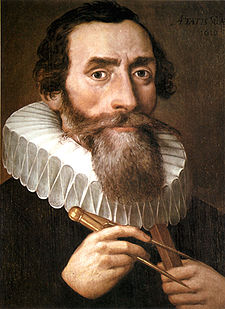Kepler: The Volume of a Wine Barrel - Introduction
The principal goal of this article is to show Kepler's contributions to the development of calculus in a visual and interactive way.

During the century before Newton and Leibniz the works of Greek mathematicians were popular, especially the work of Archimedes. Infinitesimal techniques were developed for calculating areas and volumes, and Johannes Kepler (1571–1630), shown at left, contributed to these developments. His interest in calculating areas and volumes stemmed from an incident that occurred when he married for the second time in Linz, Austria, in 1613. Kepler had purchased a barrel of wine for the wedding and the wine merchant’s method of measuring the volume at first angered him. This inspired Kepler to study how to calculate areas and volumes and to write a book about the subject, Nova stereometria doliorum vinariorum (New solid geometry of wine barrels), which was his main contribution to the development of the integral calculus.
The wine barrel incident also led Kepler to take up a problem of differential calculus, the problem of maximums: What is the best design for a barrel in order to maximize its volume? Today, we solve this problem using derivatives because we know that, at a maximum (or minimum) value of a differentiable function, the derivative of the function is zero. Fermat was the first to relate maximum and minimum problems to tangents to curves: at a maximum or a minimum the slope of the tangent to the curve is zero. Kepler was able to show that, despite minor differences, the proportions of the Austrian wine merchant's barrels were such that the procedure used to calculate the volume actually would be quite accurate, after all.
Editor's note: A copy of this article, "Kepler: The Volume of a Wine Barrel," featuring four interactive applets is available at the website MatematicasVisuales. Three of those applets were created for this version of the article in July 2020.